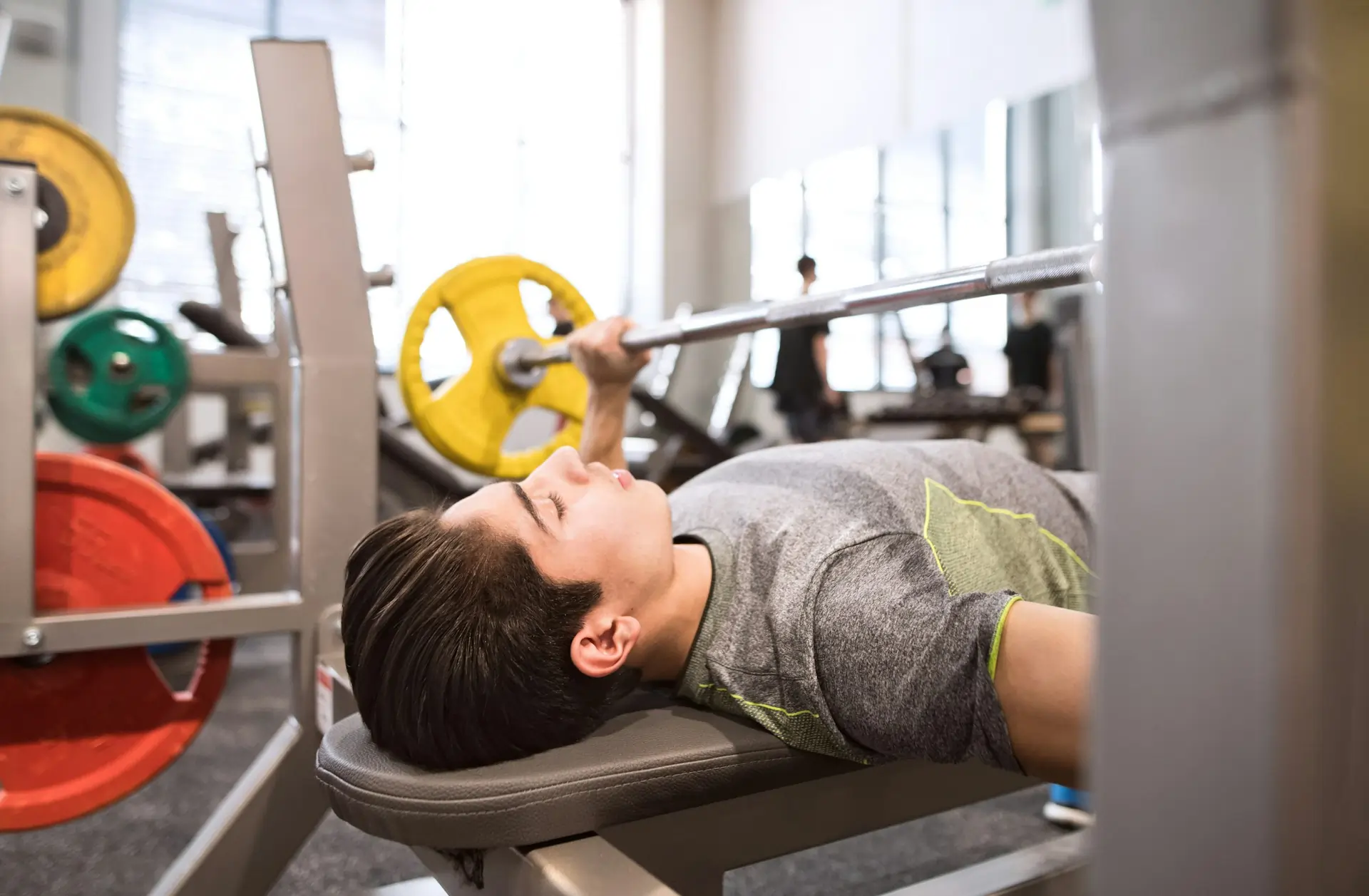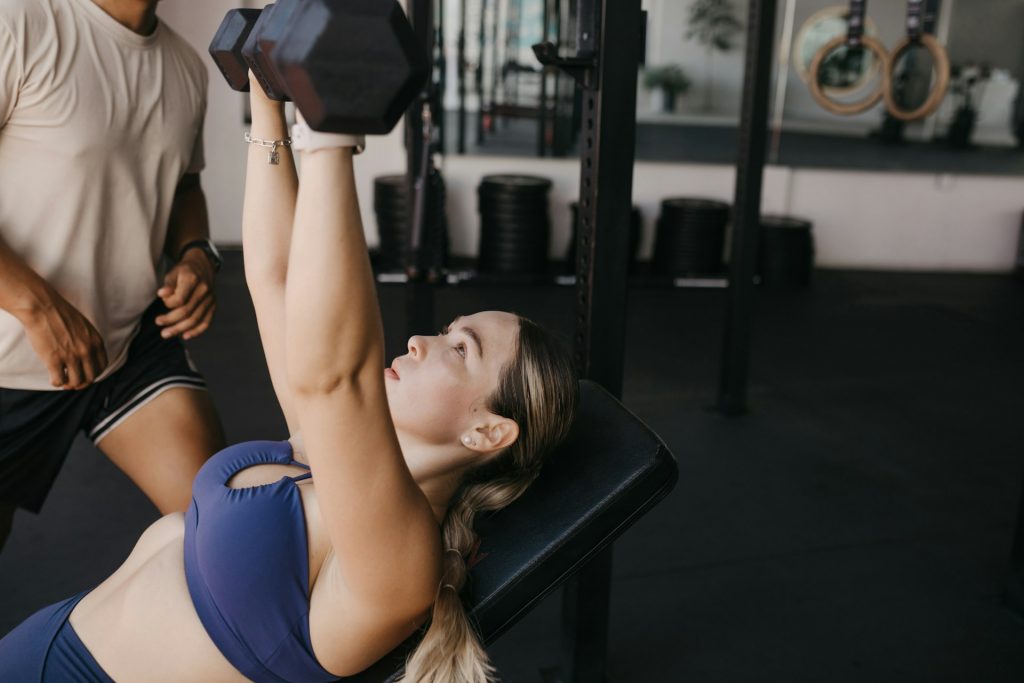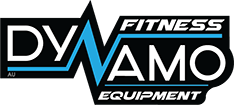
Full-Body Workout Using Only a Weight Bench
Many people believe a complete workout requires a room full of fitness equipment. However, a full-body routine with a weight bench alone can unlock serious strength, balance, and flexibility. This one tool helps you train all major muscle groups without the need for a gym membership or bulky machines.
Whether you want to improve performance, build lean muscle, or simply save time and space, a bench-based routine gives you the freedom to train smarter.
Dynamo Fitness provides versatile, durable weight benches that turn limited space into a powerful training zone. You can build your entire strength and conditioning program around a bench and still see measurable results.
Why a Weight Bench Is a Full‑Body Power Tool
Stability and Versatility Benefits
A flat bench or adjustable bench offers a stable platform that supports a wide range of exercises. You can perform presses, rows, step-ups, and many other moves with full control and balance. The structure allows you to train with proper form, which helps reduce the risk of injury and improve output.
Unlike unstable surfaces, a bench helps you isolate key muscles without sacrificing stability. With dumbbells, a barbell, or body weight, the bench enhances every rep by creating a controlled base. As a result, each movement becomes more effective. This makes it a smart choice for both beginners and experienced lifters.
How a Bench Targets 9 Muscle Groups at Home
A single bench can activate up to nine major muscle groups, which include the chest, back, shoulders, arms, core, glutes, hamstrings, quads, and calves. You can press for chest, row for back, curl for biceps, extend for triceps, raise legs for core, and step up for legs.
The variety in angles and positions lets you hit muscles from different directions, which promotes more balanced growth. You can even perform unilateral exercises, such as single-leg step-ups or split squats, to fix strength imbalances.
How to Structure an Effective Weight Bench‑Only Routine

Frequency & Split
To gain strength and muscle with a weight bench-only routine, you need to train at the right frequency. Working your full body two to three times per week strikes a solid balance between recovery and progress. This schedule helps you train each muscle group often enough to stimulate growth without placing too much strain on your joints.
For beginners, a Monday-Wednesday-Friday split often works well, while more advanced users can use an upper-lower split and still rely on the weight bench. When you spread your workouts throughout the week, you create a rhythm that your body can adapt to more efficiently.
Reps, Sets & Progression
Progressive overload remains the key to building strength and muscle, even with minimal equipment. For most full-body exercises, three to four sets of eight to twelve reps help maximize hypertrophy. When those numbers feel easy, you can increase the load, slow down the tempo, or reduce rest time to raise the intensity.
Adding volume gradually each week ensures your muscles keep adapting. You can also rotate through movement variations to challenge different parts of a muscle group. This helps you avoid plateaus while keeping your workouts fresh.
Full-Body Weight Bench Exercises You Can Rely On
To build a strong and balanced body, you need variety. A weight bench allows you to perform exercises across all movement patterns, such as pushing, pulling, stabilizing, and stepping. This section breaks down the most effective exercises into four groups, so you can target every major muscle while keeping your workout structured.
Upper Body Push (Chest, Shoulders, Triceps)
These movements build pressing power and upper-body definition. They also create a strong foundation for everyday movements like pushing doors or lifting overhead.
Best push exercises with a bench
- Flat bench press (dumbbells or barbell)
- Incline bench press to emphasize upper chest
- Seated shoulder press for deltoid strength
- Triceps dips using the edge of the bench
Upper Body Pull (Back, Biceps)
Pulling exercises improve posture and balance out the front-heavy focus of pressing work. They also strengthen the muscles responsible for pulling and lifting movements.
Top pull variations
- Chest-supported dumbbell row
- Incline biceps curl using the bench back
- Rear delt raise while lying face down
Lower Body & Glutes
These moves train your legs, hips, and glutes while improving balance and mobility. The bench helps support your setup and gives you space to move deeper into each rep.
Bench-supported lower body work
- Bulgarian split squats for single-leg strength
- Step-ups to train explosiveness and coordination
- Glute bridges with shoulders on bench for glute activation
Core & Stability
A stable bench surface helps isolate the core while giving you a controlled platform. These movements build core strength that supports every other lift.
Core-focused moves with a bench
- Leg raises with your hands gripping the bench sides
- Incline crunches for upper abdominal focus
- Plank with feet elevated to challenge stability and endurance
Sample 3-Day Weight Bench Workout Plan
A smart routine gives structure to your week and keeps your training balanced. This 3-day plan uses only a weight bench and dumbbells, yet it covers every major muscle group with purpose. Each day focuses on compound lifts, support moves, and core activation, making it ideal for strength and functional fitness.
Day 1 – Upper Body & Legs
| Exercise | Sets × Reps | Focus |
| Incline Bench Press | 3 × 10 | Upper Chest |
| Dumbbell Row | 3 × 10 | Back |
| Split Squat | 3 × 12 | Legs |
| Leg Raises | 3 × 15 | Core |
Day 2 – Push Focus & Glutes
| Exercise | Sets × Reps | Focus |
| Flat Bench Press | 3 × 8 | Chest |
| Rear Delt Raises | 3 × 12 | Shoulders |
| Glute Bridge | 3 × 15 | Glutes |
| Plank on Bench | 3 × 45 sec | Core |
Day 3 – Shoulders, Arms & Core
| Exercise | Sets × Reps | Focus |
| Seated Shoulder Press | 3 × 10 | Shoulders |
| Step-Ups | 3 × 10 each leg | Legs |
| Triceps Dips | 3 × 12 | Arms |
| Incline Crunches | 3 × 15 | Core |
Tip: Rest for 60 to 90 seconds between sets. Pick a weight that allows clean form throughout every rep. Increase load only when technique stays sharp.
Mistakes to Avoid When Training with a Bench
Only Doing Upper Body Work
Many start with pressing movements and stop there. A complete routine should cover your lower body, core, and back as well. Full-body training boosts strength evenly and improves performance in daily life.
Skipping Core or Leg Movements
The bench supports several lower-body and abdominal exercises, yet some avoid them. Skipping legs weakens the structure that supports your upper body. Skipping core exercises limits your ability to stay balanced during every lift.
Not Adjusting Bench Angles
Incline and flat settings create different muscle demands. Keeping the bench fixed reduces variety and slows results. Adjust the angle to hit your muscles from new directions and keep your body challenged.
Poor Bench Stability or Setup
If your bench wobbles or sits unevenly, your form and safety suffer. Always position it on a flat surface. Lock every moving part in place before you start. A secure setup improves focus, reduces risk, and enhances performance.
Final Thoughts
You can transform your strength with a weight bench and the right approach. It covers pressing, pulling, core, and leg work without the need for complex machines. This makes it one of the most efficient tools for home and gym training.
Dynamo Fitness offers a wide range of premium gym equipment designed for home gyms and commercial setups. Explore our collection online or visit us at one of our mega showrooms in Australia.
If you have any questions, please feel free to reach out to our knowledgeable team today.
How many days a week should I use the bench?
Three non-consecutive days per week works best for recovery and strength gains.
Do I need weights for all these movements?
Many exercises benefit from added resistance, but bodyweight variations also work. Use both to match your fitness level.
Is a bench better than resistance bands for full-body training?
A bench gives you a stable base and better range for strength training. Resistance bands help too, but a bench adds more versatility.
